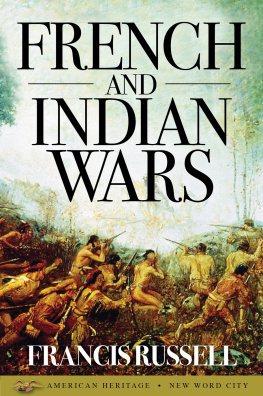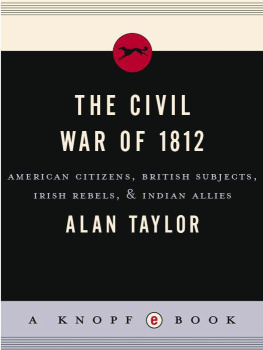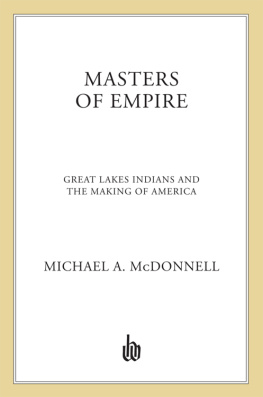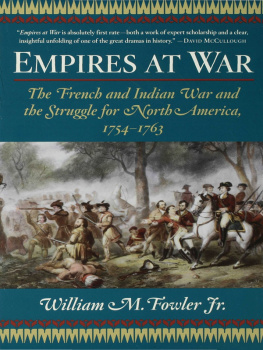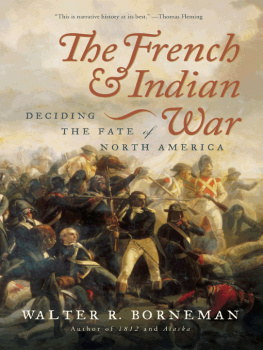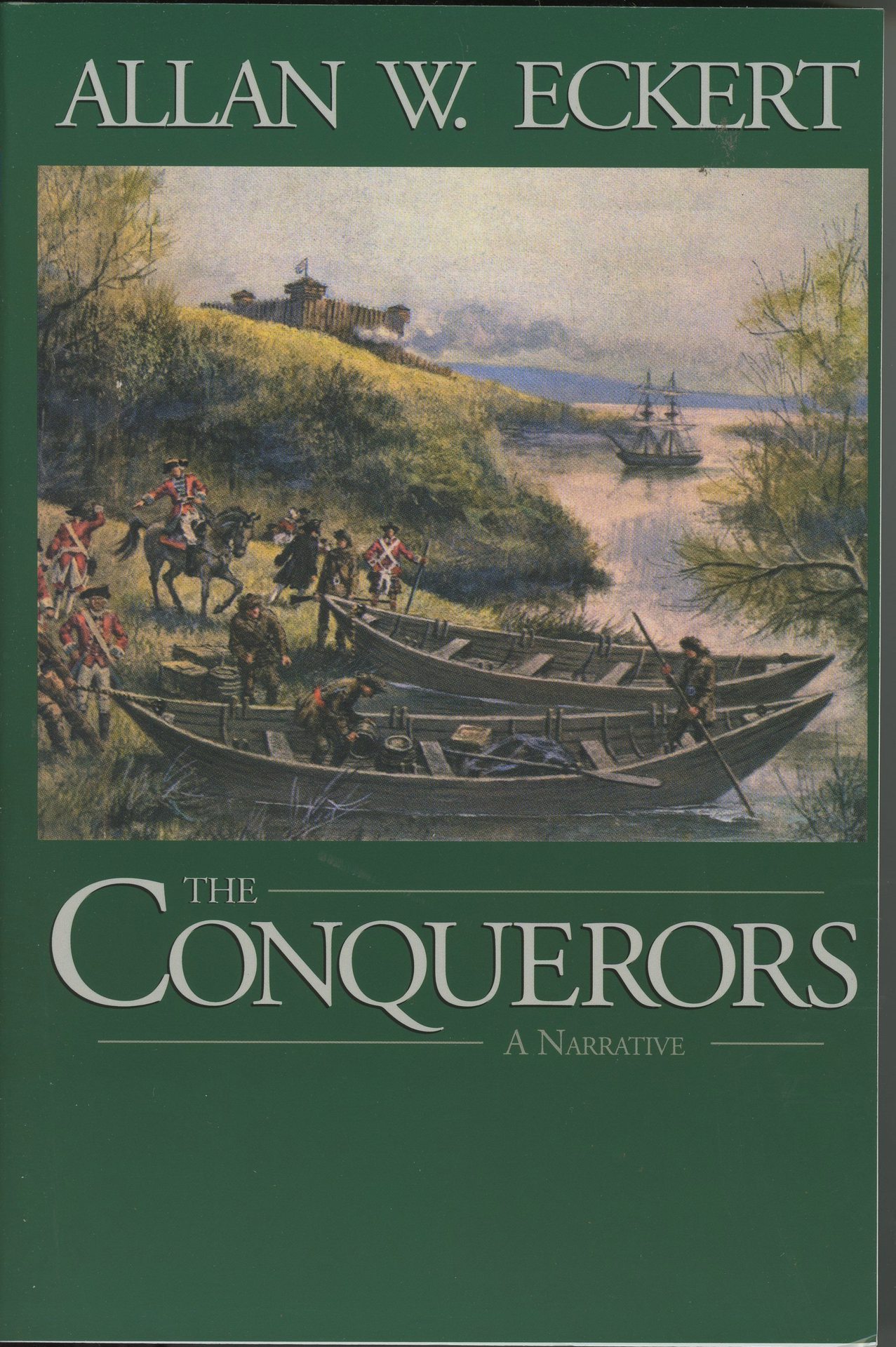THE CONQUERORS
A NARRATIVE
By ALLAN W. ECKERT
JESSE STUART FOUNDATION
ASHLAND, KY
2002
Copyright 2002 by Allan W. Eckert.
All rights reserved. No part of this book may be reproduced or utilized in any form or by any means, electronic or mechanical, including photocopying, recording, or by an information storage or retrieval system, without permission in writing from the Publisher.
ISBN 1 -931672-06-7
ISBN 1-931672-07-5 (pbk.)
Published by:
Jesse Stuart Foundation
4440 13 th Street
Ashland, KY 41102
(606) 326-1667
DEDICATION
With warmth and great esteem,
this book is dedicated to
a truly good friend,
Richard Reinauer
Without any exaggeration, I look upon the Northern Indians to be the most formidable of any uncivilized body of people in the world. Hunting and war are their sole occupation, and the one qualifies them for the other; they have few wants, and those are easily supplied; their properties of little value, consequently, expeditions against them, however successful, cannot distress them, and they have courage sufficient for their manner of fighting, the nature and situation of their countries require not more.
SIR WILLIAM JOHNSON
Diary of the Siege of Detroit, ix-x
The chronicles of the American borders are filled with the deeds of men who, having lost all by the merciless tomahawk, have lived for vengeance alone; and such men will never cease to exist so long as a hostile tribe remains within striking distance of an American settlement.
FRANCIS PARKMAN
The Conspiracy of Pontine, II, 117
I mean to destroy the English and leave not one upon our lands.
PONTIAC
The Conspiracy of Pontiac, I, 251
AUTHORS NOTE
THE CONQUERORS is fact, not fiction. It is living history; the narrative account of the day by day, often minute by minute, experiences of the people and events of the time period it covers. Every incident described herein actually occurred; every date is historically accurate; every character, regardless of how major or how minor, actually lived the role in which he is portrayed.
For the reader who seeks the entertainment of a good story, written history all too often becomes burdensomely pedantic and tedious; on the other hand, the historical novel, while often dramatic and interesting, can rarely if indeed ever be relied upon for historical accuracy. It has long been my belief that this gap could and should be bridged; that there is no reason why these two literary forms could not be wedded in a new and perhaps better form which combines the inherent vitality, depth of characterization, drama and entertainment of the historical novel with the unswerving reliability of the truly historical work.
It is this marriage, this blending of the two forms, that I have attempted in The Conquerors, as was similarly done in its two predecessors in the author's projected series entitled The Winning of America. In this present book, as was the case in those previous two The Frontiersmen and Wilderness Empire many of the techniques normally associated with the novel form have been utilized in order to help provide continuity and maintain a high degree of reader interest, but in no case has this been at the intentional expense of historical accuracy.
Within the text there are occasional numbered notes keyed to an Amplification Notes section at the back of the book. These are notes which provide material that is primarily tangential to the subject under discussion but nevertheless of added interest and value in providing the reader with a greater understanding of the events portrayed and a stronger sense of orientation where geographic locales are concerned. They are numbered consecutively from beginning to end of the book, but they need never intrude; the reader may choose for himself whether he wishes to read them as he reaches them, but it is not essential that he do so. Also at the rear of the book there is a bibliography of the principal sources of reference for this volume, as well as a complete index of characters, places and events. As in Wilderness Empire, as much as possible I have adhered to use of Indian names for Indian individuals rather than the often clumsy or derogatory translations or nicknames given to them by the English or French. I feel there is a much greater dignity and a certain charm and musical ring to the actual Indian names. Hokolesqua of the Shawnees, for example, was called Cornstalk by the English, while Chief Unemakemi of the Miami tribe was called Damoiselle by the French and Old Britain by the English. In those few cases where the reader might be more familiar with the English or French name than with the Indian name, correlation is always shown between them. Admittedly, many of the Indian names appear almost unpronounceable at first glance, but such is not really the case. To aid the reader in this respect, at the back of the book is an alphabetical listing by tribe of all the Indian characters who appear herein and, where called for, these names are also spelled phonetically for correct pronunciation. Included as well are other names the same Indian was known by, his rank or status in the tribe and, in some cases, family relationships. The Conquerors takes up the thread of narrative where it left off in the preceding volume. Wilderness Empire. However, chronologically speaking, the first volume of this series, The Frontiersmen, comes after the time period of The Conquerors. The individual volumes of this series, even though there is some overlapping of characters between them, are not dependent upon one another; yet, they strongly complement each other and all of them contribute to the principal theme of the series, which is a presentation of precisely how the white man took North America from the Indians. Step by step The Winning of America series will move across the continent, showing clearly and in the most fundamentally human terms, how the land was won through encroachment, warfare, trickery, grant, treachery, alliance, deceit, fraud, theft, and treaty. It is a story which began at the first white contact with the Indians of this continent, and which continued through the centuries until subjugation or extinction of the tribes was total.
As in the past volumes and those to come in the future it is neither the intention nor the desire of the author to champion either the cause of the Indians or that of the whites; there were heroes and rascals on both sides, humanity and atrocity on both sides, rights and wrongs on both sides. The facts are presented chronologically, just as they occurred, and with the greatest possible degree of accuracy. There has been no author intrusion, no editorializing, no moralizing. It has not been necessary. The facts speak amply for themselves, and whatever conclusions are drawn must be drawn by the reader himself.
Allan W. Eckert, Englewood, Florida, May 1970
ILLUSTRATIONS
PROLOGUE
[ June 23, 1758 Friday ]
T HE fur-wrapped figure sitting on the high ledge jutting from the cliff was as motionless as the rock formation behind him and the barren shelf upon which he sat. He had been in this position as the first gray of dawn had begun thrusting back the night and he had not moved as gradually the stars were extinguished and the sliver of moon paled in the brightening sky.
He had not turned to watch as the sun lifted free from the slightly rippled waters of vast Lake Huron, which stretched to the horizon behind and to the left of him, nor did he indicate any appreciation of the warmth of its rays, which dispelled the cold grip of night that had held him so long. Even when several hours more passed and the waters of the lake below had changed from black to gray and then to greenish and now to startling blue as the sun rose ever higher in a cloudless sky, he did not move, although great beads of perspiration glistened on his forehead.



